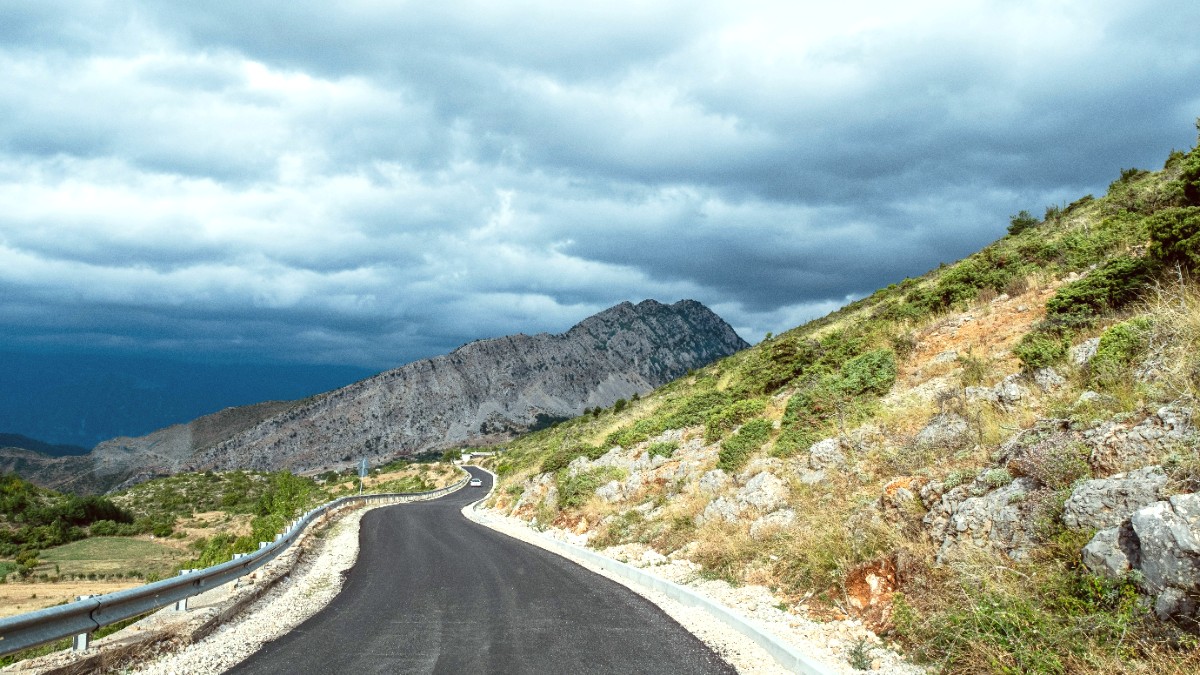
Albania
Butrint National Park: A UNESCO World Heritage Site near Sarandë, featuring extensive ruins of ancient Greek, Roman, Byzantine, and Venetian civilizations, spanning over 2,500 years. Entry fee: ~1000 ALL (€8-10). Consider arriving early morning or late afternoon to avoid crowds and harsh midday light. Wear comfortable shoes.
Blue Eye (Syri i Kaltër): A natural spring and geological phenomenon near Sarandë, known for its intense blue-green water emerging from a deep karst pool. Small entry fee for vehicles (~100-200 ALL) or pedestrians (~50 ALL). Visit early on a sunny day for the most vivid color. Llogara Pass: A spectacular mountain pass (1,043m / 3,422ft) on the SH8 coastal road. It offers panoramic views of the Ionian Sea and Riviera coastline. Always accessible, no fees. Stop at designated viewpoints for photos; late afternoon often provides the best light.
These venues enrich the cultural landscape, offering insights beyond the natural beauty of the coast.
A charming, traditional stone village perched on a hillside.
(See Iconic Landmarks) A perfectly preserved Ottoman town with unique stone houses.
(See Iconic Landmarks) Another well-preserved Ottoman town with distinct architecture.
Near Lushnjë (inland), an important Orthodox monastery. The Church of St. Mary in Himarë Castle is also historic.
Thousands of concrete bunkers dot the landscape, a legacy of the communist regime. Near Porto Palermo Castle, a former naval base has a hidden submarine tunnel.
The Albanian Riviera's natural beauty stretches from its stunning coastline to its mountains and unique geological features, offering diverse sights.
Renowned for white sand and turquoise waters, with small islands accessible by swimming or short boat rides.
A long, wide pebble beach with clear water and beach clubs.
A large, popular pebble beach with good facilities.
A secluded, stunning beach at the end of a canyon, reachable by hike or boat.
The longest continuous beach in the Ionian, often less crowded.
Jalë is a beautiful bay with clear water and a lively atmosphere. Dhermi is the main beach area with hotels.
Features diverse flora and fauna, hiking trails, and stunning mountain-sea views along the Llogara Pass.
Albania's only marine park, protecting a rich marine ecosystem, sea caves, and secluded beaches. Accessible by boat tours.
Near Vlorë, Narta Lagoon is an important wetland for migratory birds, including flamingos during certain seasons.
The Riviera also features geological wonders and historical markers beyond its ancient cities.
Beyond the well-known landmarks, the Albanian Riviera hides secluded spots, local favorites, and unique experiences for those willing to explore .
These less-visited areas provide an intimate perspective of the region's charm and natural splendor.
Explore off-the-beaten-path attractions that offer peaceful isolation and incredible views.
Find less explored areas and local favorites that provide a local feel.
Capture breathtaking sunrise or sunset moments over the Ionian Sea from Llogara Pass.
Photograph the mesmerizing "Eye" at Blue Eye spring for its intense blue-green hue.
Enjoy panoramic views from Himarë Castle, showing the coastline and surrounding landscapes.
The clear waters of Ksamil or Jalë offer fantastic opportunities for underwater photography.
Capture the dramatic cliffs and canyon leading to Gjipe Beach for striking landscape shots.
Many small, unnamed coves and beaches dot the coastline, offering unique photo spots with local character.
The olive groves and traditional architecture in villages like Old Qeparo offer picturesque rural scenes.
Views from Borsh Castle overlook the longest beach, providing a panoramic photo opportunity.
While most cultural institutions are concentrated inland, some offer additional historical context relevant to the Riviera.
Explore traditional architecture beyond the typical coastal resorts for a genuine feel of Albanian heritage.
Maximize your sightseeing experience with these practical considerations and insights.
Many sites, especially ancient ruins and castles, involve walking on uneven terrain. Wear sturdy, comfortable shoes.
For popular attractions like Butrint or Blue Eye, visit early morning or late afternoon to avoid peak crowds and strong midday sun.
Consider renting a car for flexibility, especially for visiting multiple sites or hidden gems off public transport routes.
Organized Riviera tours often include main sites. Local guides are available at entrances for insight, for example, at Butrint. Check GetYourGuide for booking tours.
Book tours with GetYourGuideGjirokastër and Berat are highly recommended for their historical and cultural significance, although they are not directly on the Riviera.
Boat tours are a great way to explore secluded beaches and sea caves along the Karaburun Peninsula and Sazan Island from Vlorë or Sarandë.
When visiting religious sites, dress modestly. Always ask permission before photographing individuals, especially in rural areas.
The Mediterranean sun can be intense. Carry water, wear sunscreen, and use a hat, especially during summer visits to outdoor sites.
Information on accessibility for those with mobility issues varies greatly by site.
Capture your memories while adhering to respectful photography practices.
While a car offers maximum freedom, furgons (minibuses) are a cost-effective way to reach many towns and attractions.
For more flexible touring, consider booking guided excursions through platforms like GetYourGuide, which often cover transport.
The Riviera's attractions vary in experience depending on the season, from bustling summer days to tranquil off-peak exploration.
July and August mean lively atmospheres, extended opening hours, but also larger crowds and higher prices for everything.
May, June, September, and October offer pleasant weather, fewer crowds, and better prices. Many establishments are still open.
November to April sees the lowest prices and fewest tourists. Many coastal establishments close down.
Road conditions can be more challenging in mountainous areas during winter.
Summer is for beach activities, while off-season focuses on leisurely coastal walks and local life.
Some marine activities might still be possible in early October if the weather permits.
Hiking conditions vary seasonally, with autumn and spring being ideal for treks.
Always check local weather forecasts before embarking on hikes, especially in mountainous areas.
Purchasing goods directly from local markets and artisans aids the local economy.
Practice Leave No Trace principles, especially in natural parks and secluded beaches, to help preserve the pristine environment.
Learn about the rich history of the sites you visit to appreciate their cultural significance fully.